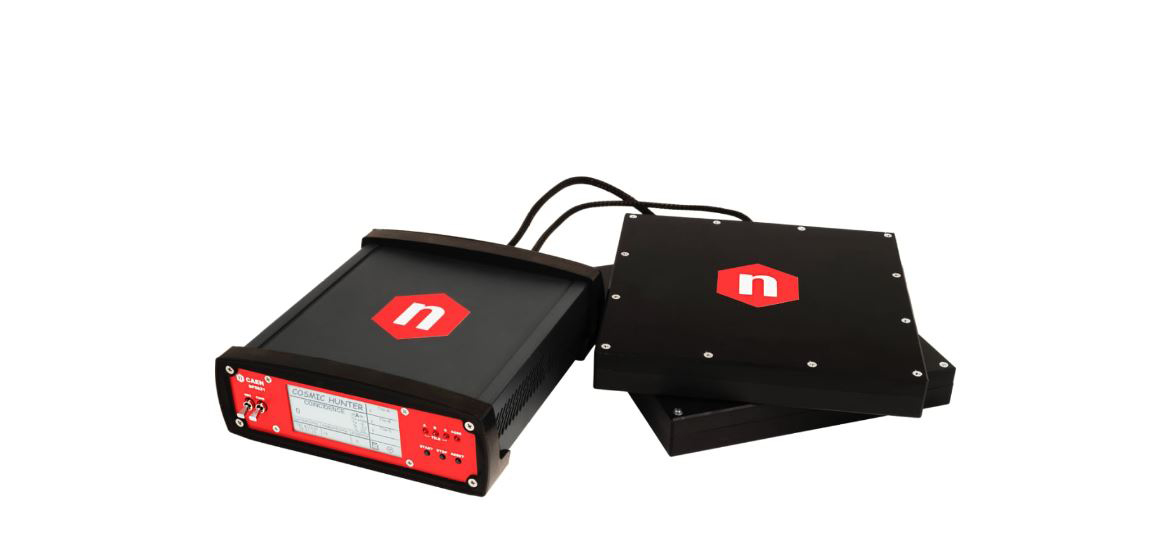| Difficult | Execution Time | Data Analysis | Radioactive Sources |
|---|---|---|---|
| Yes | No |
Equipment: SP5620CH – Cosmic Hunter
| Model | SP5621 | SP5622 (x2) |
|---|---|---|
| Description | Coincidence Module | Detection System |
Requirements
A large iron or lead tile is strongly suggested.
Purpose of the experiment
The main goal of this experiment is verify the absorption of the cosmic rays passing through solid matter and understand related observations about the material which has been traversed by the cosmic rays.
Fundamentals
Before reaching the ground cosmic muons lose energy by ionization and through processes such as bremsstrahlung, creation of pairs (e+ e−), and nuclear interactions. If a detector is located within a building or below the earth’s surface the detected muon flux decreases in relation to the thickness of the crossed rock/material. The expression of the average energy lost by a muon through matter is:
−dE / dx = k (E) + bb (E) E + bp (E) E + bnE
where the bb(E), bp(E) and bn are proportionally connected to the losses due to bremsstrahlung, to pairs creation, and to the nuclear interactions respectively. Interesting applications which explore the absorption of cosmic rays are represented by muon radiography and tomography. Muon radiography and tomography are based on the measurement of the absorption undergone by high energy muons when they cross solid objects. Good measurement techniques can provide precise maps of the average density of the object under investigation. These methods are used in several fields, from the geophysical application (volcanoes, caves, etc.) to the control of illicit traffic of radioactive materials, and much more. Typically, the average energy loss is about 1.7 MeV g− 1cm2, therefore in the case of 1 Km of crossed rock whose density is equal to 2 g cm − 3, the muons lose about 0.5 TeV.
Carrying out the experiment

Experimental setup block diagram
- Connect the cable connectors of the two SP5622 to the tile inputs located on the rear panel of the SP5621 module.
- Power on the SP5621 module and start the acquisition via the front panel START button. When a charged particle crosses the black tile it’s energy is converted into scintillation light. The photons which are produced are detected by the photosensor and converted into an electrical signal. The number of counts for each scintillator may be viewed via the SP5621 display.
- Select double scintillators coincidence mode via the related button on the front panel, and then select measurement integration time.
- Before beginning acquisition the geometry of the tile must be determined. Be sure to keep this geometry for the duration of the experiment. Acquire data in a cave or solid structure.
- Then repeat acquisition, keeping the tiles in an identical geometric orientation, outside of the structure or cave.
Results
Students can estimate absorption extent by comparing the results of the measurements performed underground or inside a cave to measurements performed outdoors and without any solid obstructions. Additionally, if the thickness of the overburden material or structure is known then some hypothesis about the average density of the material can be determined.

An example of absorption measurement has been performed in the basement of a building. As shown in the plot, the counting rate in the basement is reduced by 14%.


